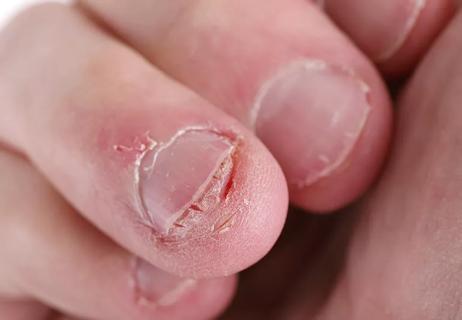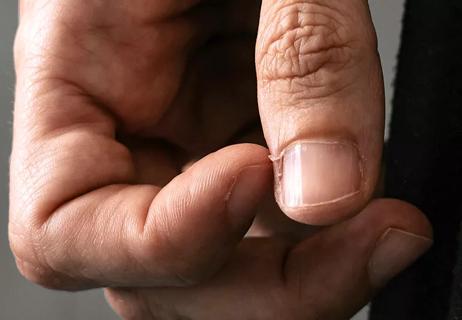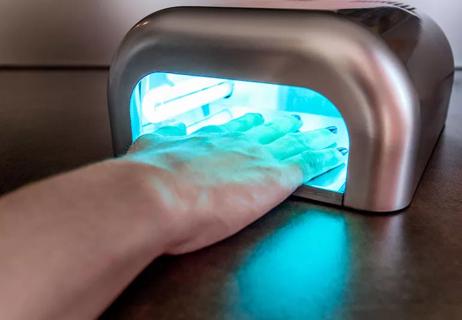Safety, hygiene and technician training are among the biggest benefits of a ‘medi pedi’

Your feet carry you through the ups and downs of life. But when that journey starts to take its toll, it might be time for a pedicure — especially during sandal season.
Advertisement
Cleveland Clinic is a non-profit academic medical center. Advertising on our site helps support our mission. We do not endorse non-Cleveland Clinic products or services. Policy
You could DIY a pedicure at home or head to your local nail salon for the full treatment. But did you know there’s another option? (Hint: It’s not a so-called “fish pedicure” — which you should probably skip, by the way.)
“A medical pedicure offers a higher level of cleanliness, safety and care compared to traditional pedicures,” shares podiatrist Joy Rowland, DPM. “Anyone can benefit from a medical pedicure, but they’re particularly helpful if you have foot problems or health conditions that affect your feet.”
A medical pedicure, or “medi pedi,” is a clinical version of a salon pedicure. It’s based on a medical model of care that strongly emphasizes technician training, infection prevention and your health.
While they may sound similar, medical pedicures and regular pedicures differ in several ways. Dr. Rowland delves deeper into some of the differences.
One major difference between the two types of pedicures is the level of training of the technicians who perform them.
Licensing requirements for regular nail technicians vary by state, though most states require:
When you get a medical pedicure, you’ll be under the care of a certified medical nail technician (MNT), a licensed nail technician with advanced training in the medical aspects of foot and nail care. As part of their certification, they also complete an internship under the direction of a podiatrist.
Advertisement
Another important difference between the two types of pedicures is that a medi pedi focuses mainly on foot health rather than aesthetics.
“Your feet will look and feel great after a medical pedicure, but the experience itself is different,” Dr. Rowland clarifies.
For example, medical pedicures are waterless. You may find it comforting to soak in a warm, sudsy basin, but foot soaks are a source of bacteria that can cause an infection if there are any breaks in your skin.
Your MNT also may not offer foot massage, lotions or nail polish, as salons and spas do. If those services are important to you, check whether they’re offered before you book an appointment. Knowing what to expect can help you make the most of the experience. (That said, doctors recommend giving your toenails the occasional break from nail polish, anyway … so, maybe now’s the time!)
Typically, you’ll need to go to a podiatrist’s office or foot care clinic for a medical pedicure, Dr. Rowland says. The clinical nature of the medi pedi means it provides some different benefits from a regular pedicure, too.
When you get a medi pedi, you get the expertise of the MNT and the podiatrist they work with. You probably won’t see the podiatrist directly, but the MNT can consult with them if needed, which isn’t an option in a salon.
You certainly don’t expect to get an infection at a nail salon, but bacteria, viruses and fungi may be lurking in the water basins, tools and even nail polish — yes, even when the nail technicians are diligent about disinfection.
“Foot and toe infections can have serious consequences,” Dr. Rowland warns, “but certified MNTs use the same sterilization procedures and sterile techniques that healthcare providers use to prevent infections.”
You won’t find a metal, grater-like callus remover in a medical pedicure office. MNTs use sanding files that are less likely to tear the skin, Dr. Rowland says. They may also use more sophisticated instruments than what you’ll find in a traditional nail salon, like a sharp blade (scalpel) to remove calluses and a rotating power tool to sand down calluses and thick toenails.
In a medi pedi, safety is always a priority. Your MNT will be careful to:
Advertisement
Your MNT will check your feet and tailor your medical pedicure to give you the best results. They’ll customize your service based on your:
MNTs also understand that foot problems can make every step painful — or at least uncomfortable. A medical pedicure can help resolve certain foot issues or set you on a path to healing. They may also offer suggestions on footwear or strategies to relieve problems like:
As professionals with medical training, MNTs can often spot early signs of foot problems, including foot and nail fungus.
This is when sharing an office with a podiatrist comes in handy: Your MNT can arrange for an appointment to see the podiatrist so you can get the care you need.
After a medical pedicure, give your feet a day or two to recover. Too much activity right away can irritate or damage your skin. Also, wear supportive footwear at home and when you’re out and about.
In the long term, help keep your feet soft and healthy by applying foot cream daily — but avoid slathering it in in the area between your toes, which is prone to fungal infection.
Advertisement
To help prevent fungal nails, rub on a natural antifungal agent, such as coconut oil or a cream with camphor and eucalyptus oil, like Vicks VapoRub® or something similar.
Medi pedis are for anyone who wants a safe, sterile pedicure from someone trained in foot health. It’s also the best choice if you have foot problems or health conditions like:
If you’re thinking about scheduling a medical pedicure, Dr. Rowland recommends doing some additional research on the facility first. “It’s OK to ask questions over the phone or even visit the office,” she suggests.
When you’re choosing a location for your medi pedi, consider things like:
A medical pedicure can help get your feet in tip-top shape and ready to carry you wherever you need to go.
Advertisement
Learn more about our editorial process.
Advertisement

Color, texture or shape changes may signal a larger medical issue

These manicure techniques vary in terms of longevity, hygiene and overall nail health

A combination of treatments can help you conquer the compulsion

The temporary nail damage is bad, but the cumulative UV exposure could be worse

Animal safety and bacterial infections are concerns

Resist the urge to bite, tear or rip off those little pieces of skin

Frequent manicures, high-watt bulbs increase potential

Give your nails a chance to breathe, stay healthy

Babies can get congested easily, but you can calm their cough by keeping them hydrated, using nasal drops and running a humidifier

Weight loss may cause loose, sagging skin and muscle loss to your rear

Several conditions, like vitiligo and fungal infection, can cause a loss of pigmentation, leading to white spots or patches on your skin